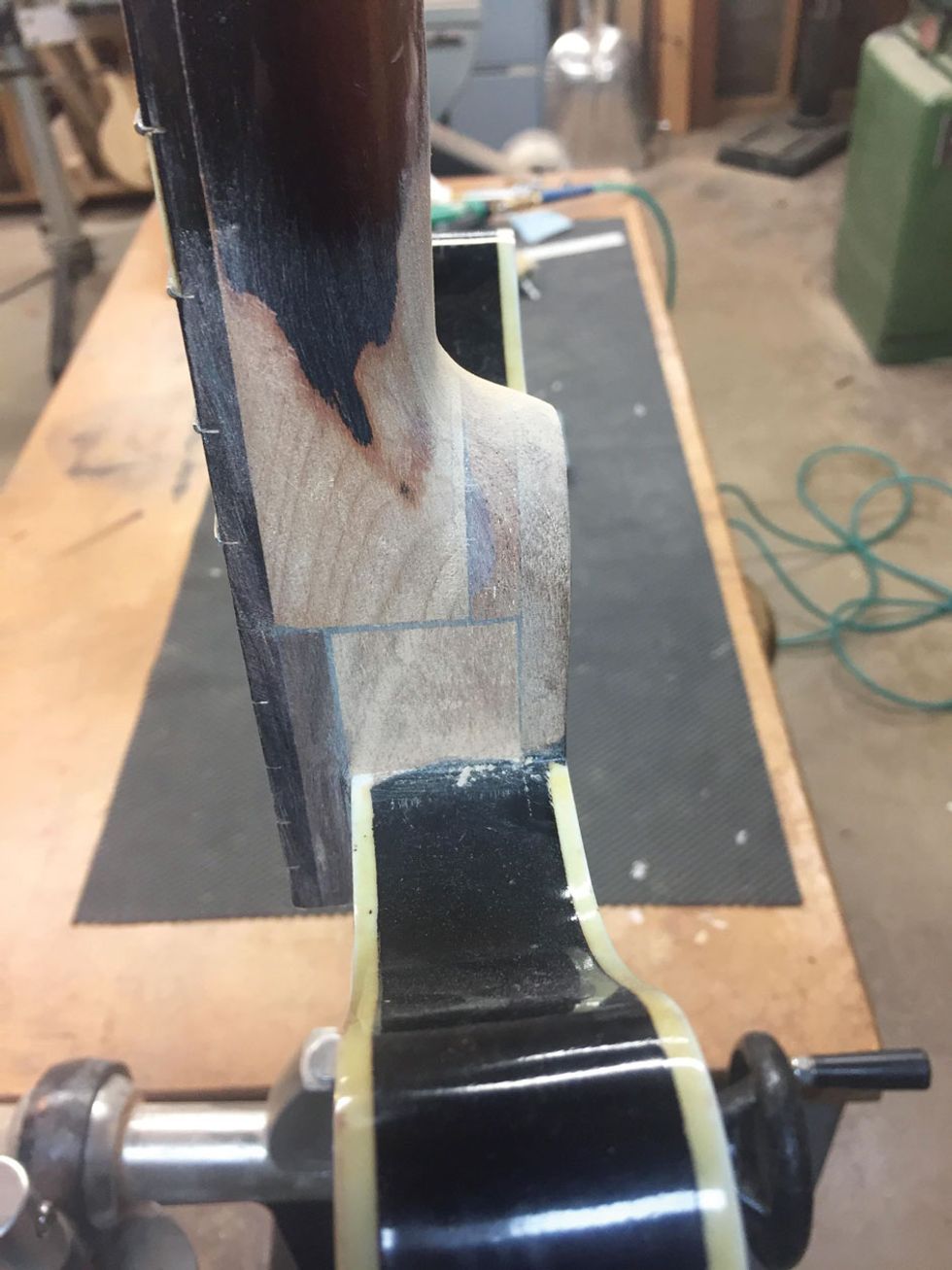In last month’s column, Ste11a—A Story of Strange Solidbodies, I described a small Japanese factory called Kurosawa that made odd and über-rare Stella electric guitars in the late ’50s. These old guitars were on my radar for many years before I was able to get my hands on one. They feature many intriguing details (including the strange Ste11a logo), and I don’t think I’ve ever seen two that were exactly alike. But studying photos of these guitars is a different experience from actually holding one, and when that opportunity finally arrived, it was a revelation.
In the 1950s, Japanese electric guitar production was really in its infancy. This era produced a lot of what my luthier friend Scott Freilich calls GSOs—guitar-shaped objects. These instruments look the part but are never really playable. I’ve seen guitars with accidental baritone scales, misplaced bridge distances, out-of-phase wiring, and all sorts of happy little accidents that made it to the guitar-playing public.
Photo 2
Of course, these mistakes weren’t exclusive to Japanese designers; similar mistakes came from factories all around the world. But with my Stella, the fatal design flaw was a bad set-neck angle. Even with the bridge completely lowered, this guitar was doomed at birth.
Photo 3
My Stella had really bad action. Good action at the 12th fret is usually around 2/32" to 3/32". This Stella measured 8/32"! But when I examined the neck, it wasn’t that bowed. Oh, and that truss rod cover is only for show. These Stellas did not have an adjustable truss rod or any type of reinforcing rod—something the builders tried to compensate for with a super-thick neck. When I noticed that the neck was pulling apart from the body, I knew this was going to need some major surgery, so off it went to Scott and then on to Ben Bruton, a guitar builder in New York. When Ben disassembled my Stella, he found the neck had a dovetail joint, rather than the more common tenon joint. The neck slid in and out of that joint rather conveniently, but the angle was never correct. Ben decided to approach the repair by creating a new joint consisting of several pieces (Photo 1). He reshaped the joint and neck so they fit, and then glued everything back together using the proper neck geometry (Photo 2). Finally, he applied a lovely finish (Photo 3). Who would know any major surgery occurred?
Photo 4
Next, the guitar came back to Scott so he could heat-press the neck straight … twice. Then he leveled the frets and repaired a short in the electronics that only showed up when the pickguard was screwed back down. Finally, he fixed the bridge radius to match the fretboard radius. Now the guitar plays pretty darn good—even with the tiny vintage frets and thin-sounding pickups. It looks good, too (Photo 4). It feels great to resurrect a guitar like this—though it took almost 60 years to complete the task!














![Rig Rundown: Russian Circles’ Mike Sullivan [2025]](https://www.premierguitar.com/media-library/youtube.jpg?id=62303631&width=1245&height=700&quality=70&coordinates=0%2C0%2C0%2C0)



![Rig Rundown: AFI [2025]](https://www.premierguitar.com/media-library/youtube.jpg?id=62064741&width=1245&height=700&quality=70&coordinates=0%2C0%2C0%2C0)



